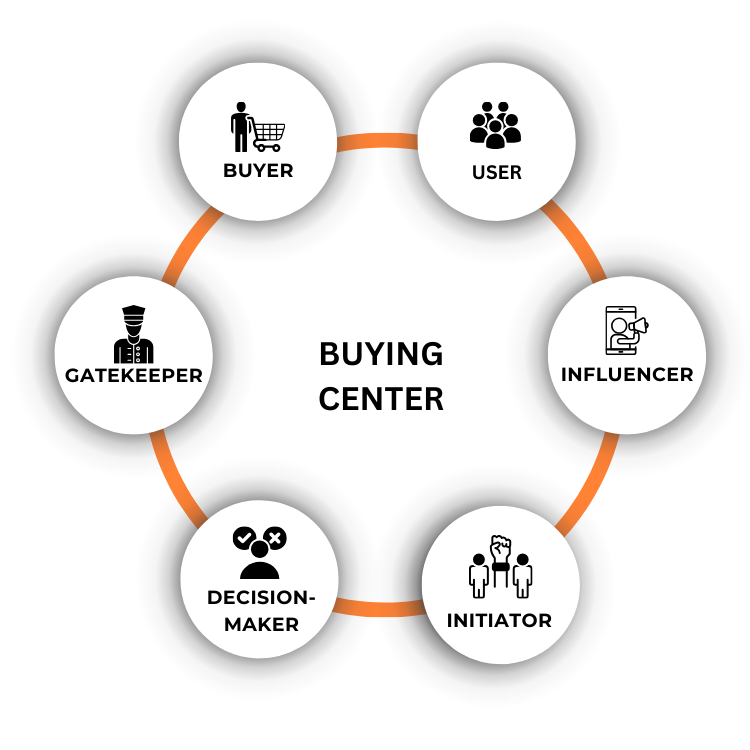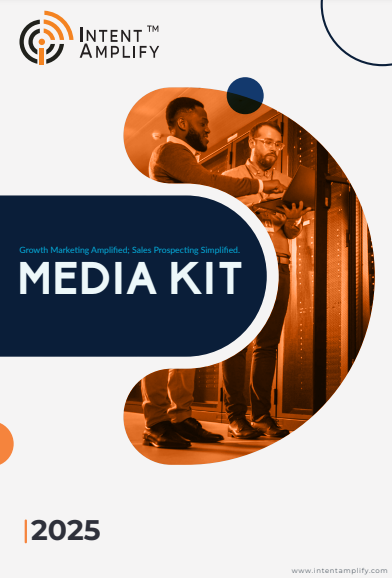
Mastering the Complex B2B Buying Decision Process
- Last updated on: December 6, 2023
By 2023, Statista projects U.S. B2B online sales to reach $1.8 trillion, and by 2025, Gartner predicts that 80% of B2B sales interactions between buyers and suppliers will occur in digital channels. The narrative that the world today is driven by digitization is passed. We have come such a long way, especially when it comes to the retail B2C sector resulting in a beautiful amalgamation of the brick-and-mortar stores and e-commerce. Consumers, having experienced the comfort and convenience of online shopping have also raised their bar in the B2B sector. They now expect the same kind of treatment even when the decision-making process is much more complex than B2C and the transaction involves multiple stakeholders. To give you an idea, let’s take a look at the buying centers involved in the B2B sales process.
In this article, we’ll go through the six stages of the B2B buying process, why it’s going through a digital transformation, and how to enhance your own B2B buyer journey.
Who is involved in the B2B decision-making process?
The B2B buying decision process is complex due to the involvement of multiple stakeholders in the decision-making process. These individuals can be from within or outside the organization and can be categorized into the following roles:

- User: The person who will be using the product and has identified the need for it.
- Influencer: Someone whose opinion is valued by the decision-makers and can influence their choice. Influencers may be from within the organization, such as subject matter experts, or from outside the organization, such as industry analysts.
- Initiator: The person who first identifies the problem or opportunity and brings it to the attention of others.
- Decision-Maker: The person who has the final say on whether or not to purchase the product or service. Decision-makers may be CEOs, CFOs, or other senior executives.
- Gatekeeper: The person who controls the flow of information within the organization and decides who has access to it. Gatekeepers may be administrative assistants, executive assistants, or other individuals in positions of authority.
- Buyer: The person who is responsible for executing the purchase, such as placing the order and making the payment.
The complexity of the B2B buying decision process is further increased by the fact that these roles may not be clearly defined and may change depending on the specific purchase. For example, the initiator may also be the user, or the influencer may also be the decision-maker.
Understanding the B2B Buying Decision Process (through an example)
A B2B (business-to-business) buying decision involves organizations or businesses choosing products or services for use within their own operations, rather than for personal consumption.
The B2B buying decision process differs significantly from its B2C counterpart, being more intricate and protracted due to the higher stakes involved in each purchasing decision that directly impacts the business. Let’s delve deeper into the 6 distinct stages of the B2B buying process with the help of an example.
Scenario:
Imagine an IT company is experiencing rapid growth and expansion. As the company scales, the existing manual processes for managing customer support tickets are becoming increasingly inefficient and unsustainable. The company’s leadership recognizes the need for a new customer support software tool to streamline operations, enhance customer satisfaction, and reduce costs.
Problem Recognition: Finding faults in the existing system
It all starts with identifying the underlying issue. Every company has to make upgrades to their existing processes to stay with the times and deliver an optimized experience to both – the customers and its stakeholders. Since a B2B company involves multiple departments working in tandem and using common resources, problem identification may arise from anywhere. In our case, let’s assume the IT company’s leadership team identified the need for a new customer support software tool to address the following issues:
Inadequate ticket management: The manual system for handling customer support tickets is overwhelmed, leading to long response times and customer dissatisfaction.
Lack of visibility: The company lacks a centralized system to track and manage customer support interactions, making it difficult to identify trends and measure team performance.
Inefficient resource allocation: The manual process is inefficient, leading to wasted time and resources.
Then we move on to the next stage in the B2B buying decision process.
Information Search: What are my options?
The IT company’s procurement team embarks on an information search to identify potential customer support software solutions. They conduct extensive research online, attend industry webinars, and consult with IT experts to gather information about various software tools.
Evaluation and Comparison: Where can I find the best deal?
There are so many solution providers out there. As a buyer going through the B2B buying decision process, thorough research on the available options is a must. The procurement team which specializes in this exact task, creates a shortlist of potential solutions and begins evaluating each option based on the criteria such as:
- Functionality: Does the tool offer the necessary features to address the company’s specific needs?
- Ease of use: Is the tool user-friendly and easy to implement?
- Scalability: Can the tool accommodate the company’s growing needs?
- Integration: Can the tool integrate with the company’s existing IT infrastructure?
- Cost: Is the tool within the company’s budget?
Purchase Justification:
The procurement team prepares a detailed proposal for the purchase of the selected customer support software tool. The proposal includes an analysis of the tool’s features, benefits, and costs. The procurement team also presents the proposal to the company’s leadership team, seeking their approval.
Stakeholders and Influences:
The decision to purchase a new customer support software tool involves various stakeholders within the IT company, each with their own unique perspectives and priorities:
- IT Leadership: The IT leadership team is concerned with the overall impact of the tool on the company’s efficiency, productivity, and customer satisfaction.
- Customer Support Team: The customer support team is concerned with the tool’s ease of use, functionality, and ability to improve their ability to resolve customer issues quickly and effectively.
- Finance Team: The finance team is concerned with the cost of the tool and its potential return on investment.
Purchase Completion:
Once the purchase is approved, the procurement team negotiates the final details of the transaction with the software vendor. This includes finalizing the pricing, licensing terms, and implementation timeline.
Post-Purchase Evaluation:
The IT company implements the new customer support software tool and begins monitoring its performance. The company tracks key metrics such as ticket resolution time, customer satisfaction, and cost savings to assess the tool’s effectiveness. The company also provides ongoing feedback to the software vendor to address any issues or suggest improvements.
The Changing Face of B2B Purchasing
The B2B buying decision process has changed significantly. It now leans towards a personalized, self-service model rather than traditional B2C interactions. B2B businesses need to offer a seamless digital experience. This should allow buyers to research products, access social proof, track purchases, and get personalized recommendations independently. However, human interaction should always be available. Buyers should be able to connect with a representative at any point in their journey. Balancing self-service with human interaction is key for B2B brands to meet evolving buyer needs.




